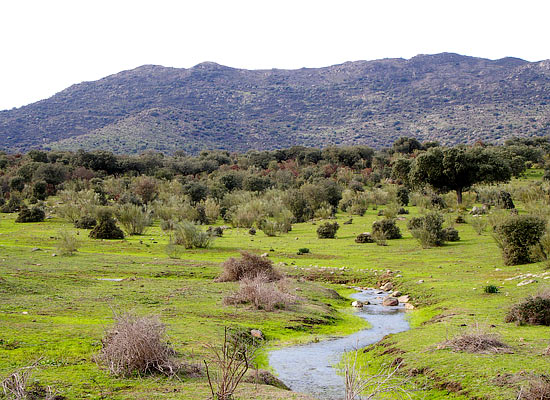| Line 22: | Line 22: | ||
Civilization prospered during the bronze and iron ages with the arrival of Phoenician and Carthaginian settlers. | Civilization prospered during the bronze and iron ages with the arrival of Phoenician and Carthaginian settlers. | ||
Extremadura was conquered by the Roman Empire starting in 25 B.C. and the modern administrative capital, Merida, is derived from the Roman name, Emerita Augusta. Merida was the capital of Lusitania, the most important Roman colony in Spain. The worlds longest Roman Bridge was built in Merida, and is still used daily today, | Extremadura was conquered by the Roman Empire starting in 25 B.C. and the modern administrative capital, Merida, is derived from the Roman name, Emerita Augusta. Merida was the capital of Lusitania, the most important Roman colony in Spain. The worlds longest Roman Bridge was built in Merida, and is still used daily today, | ||
| − | In 411 | + | In 411 Visigoths replaced the faltering Roman empire and Merida became the seat of the Archbishopric of Spain. |
In 713 Extremadura was captured by invading Arabs and for five hundred years was under Islamic rule. | In 713 Extremadura was captured by invading Arabs and for five hundred years was under Islamic rule. | ||
By 1230 Muslim castles and fortified cities in the region were reconquered by Christians. | By 1230 Muslim castles and fortified cities in the region were reconquered by Christians. | ||
Revision as of 20:43, 15 February 2010
Overview
Extremadura lies in the central western area of Spain, in a line roughly between Madrid and Seville, sharing its west border with Portugal. Famous throughout the world as one of the best and easiest places to see the many species of Raptor that breed here. A mix of high mountain, steppe, woodland and wetland makes this area unique. With a population density of 23 people per square kilometre, Extremadura is the least populated area of Europe, leaving vast areas of land perfect for birds and animals.
Birds
Notable Species
The top 20 species that visitors have on their "hit list" according to the Extremadura Tourist Board, are Spanish Imperial Eagle, Bonelli's Eagle, Cinereous Vulture, Black-shouldered Kite, Lesser Kestrel, Black Stork, White Stork, Great Bustard, Little Bustard, Pin-tailed Sandgrouse, Black-bellied Sandgrouse, Collared Pratincole, Great Spotted Cuckoo, Red-necked Nightjar, European Roller, European Bee-eater, Calandra Lark, Black Wheatear, Spectacled Warbler and Azure-winged Magpie, plus the many thousands of overwintering Common Crane.
Rarities
There are approximately 50 pairs of Spanish Imperial Eagle breeding here, and are doing well due mainly to the recovery of their staple prey, the rabbit, which suffered a 90% decline due to 2 extremely virulent diseases, but due to some sterling work by the Government, have been supplemented by captive bred and released rabbits.
Check-list
Birds you can see here include:
To do
Other Wildlife
Spanish Ibex, Otters, Genet, Egyptian Mongoose, Weasel, Stoat, Wild Boar, Iberian Hare, Red Deer, Roe Deer, Badger.
Site Information
History and Use
Prehistoric cave dwellers in Caceres date back to around 30,000 B.C, and many caves still hold their legacy of cave paintings, due to the normally dry atmosphere. Civilization prospered during the bronze and iron ages with the arrival of Phoenician and Carthaginian settlers. Extremadura was conquered by the Roman Empire starting in 25 B.C. and the modern administrative capital, Merida, is derived from the Roman name, Emerita Augusta. Merida was the capital of Lusitania, the most important Roman colony in Spain. The worlds longest Roman Bridge was built in Merida, and is still used daily today, In 411 Visigoths replaced the faltering Roman empire and Merida became the seat of the Archbishopric of Spain. In 713 Extremadura was captured by invading Arabs and for five hundred years was under Islamic rule. By 1230 Muslim castles and fortified cities in the region were reconquered by Christians. Extremadura is also the birthplace of the Conquistadores, who went on to claim most of South America for the Spanish Crown. Cortez, Pizarro and Orellana were all born in Extremadura. They captured the Aztec and Inca empires and spread their Catholic faith throughout South America.
Areas of Interest
To do
Access and Facilities
To do
Contact Details
To do
External Links
To do
Pages in category ‘Extremadura’
The following 6 pages are in this category, out of 6 total.




